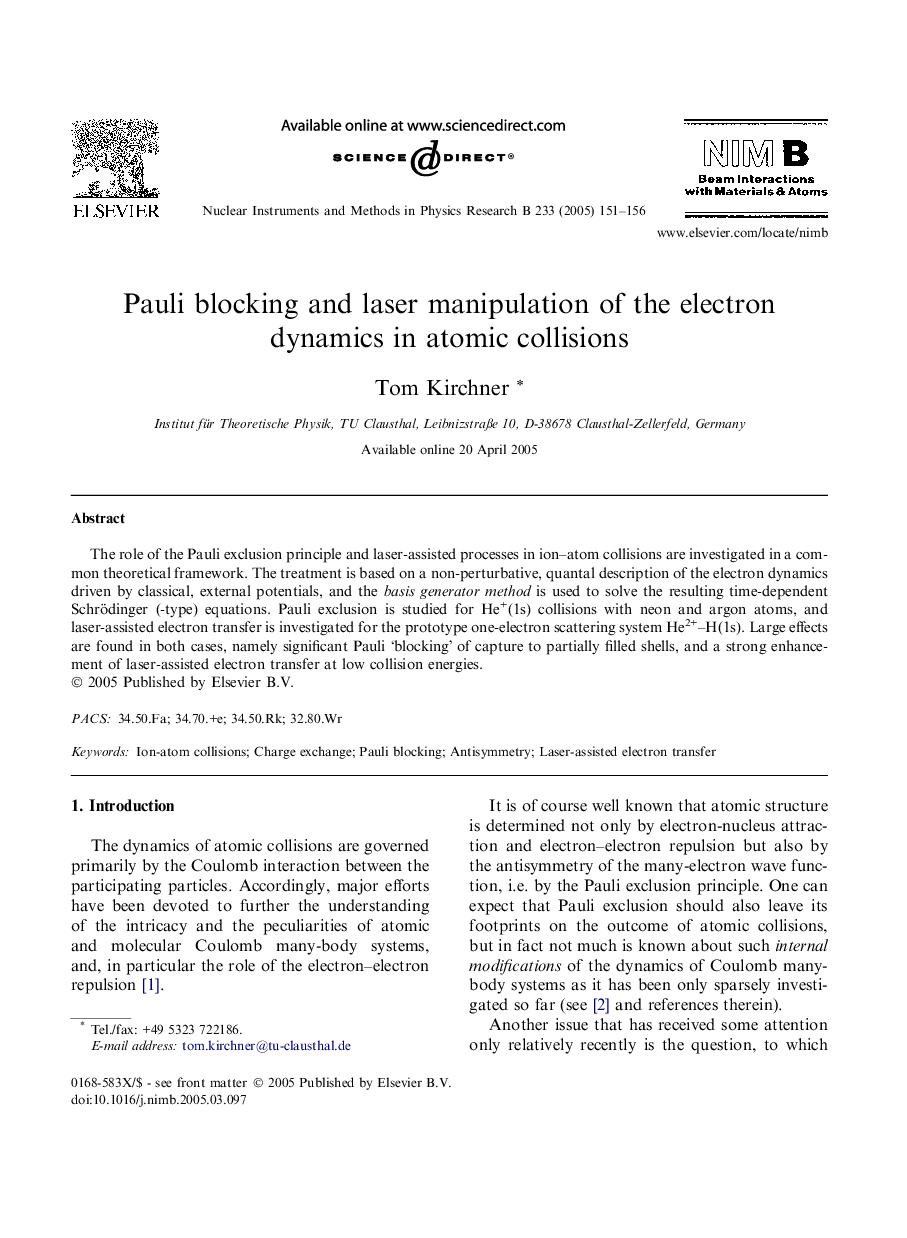| Article ID | Journal | Published Year | Pages | File Type |
|---|---|---|---|---|
| 9818041 | Nuclear Instruments and Methods in Physics Research Section B: Beam Interactions with Materials and Atoms | 2005 | 6 Pages |
Abstract
The role of the Pauli exclusion principle and laser-assisted processes in ion-atom collisions are investigated in a common theoretical framework. The treatment is based on a non-perturbative, quantal description of the electron dynamics driven by classical, external potentials, and the basis generator method is used to solve the resulting time-dependent Schrödinger (-type) equations. Pauli exclusion is studied for He+(1s) collisions with neon and argon atoms, and laser-assisted electron transfer is investigated for the prototype one-electron scattering system He2+-H(1s). Large effects are found in both cases, namely significant Pauli 'blocking' of capture to partially filled shells, and a strong enhancement of laser-assisted electron transfer at low collision energies.
Related Topics
Physical Sciences and Engineering
Materials Science
Surfaces, Coatings and Films
Authors
Tom Kirchner,
